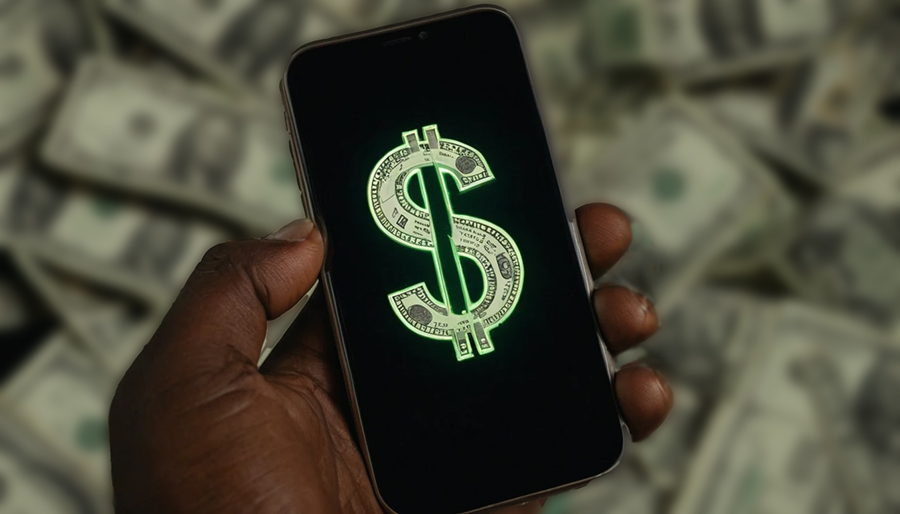Fast-growing app usage leaves many consumers worse off
By Charlene Crowell
Many Americans continue to find it challenging to keep up with the rising cost of living. Despite economic reports attesting to a growing broad economy, the majority of Americans’ household finances feel insecure – especially people who live paycheck to paycheck with little or no savings.
The financial marketplace has responded to this ongoing consumer cash crunch with an emerging predatory lending product designed to take full advantage of consumers’ financial mismatch: earned wage advances (EWA). These cash advance products are small, short-term loans, typically ranging from $40 to $200, that are repaid on the consumer’s next payday either directly from a bank account or as a payroll deduction. They’re also conveniently available with a few clicks on borrowers’ smartphones.
But as with other predatory loans, wage advances also create a deceptive and highly profitable cycle of debt built upon repeated reborrowing with interest equivalent to 300 percent annual percentage rates or more. In most cases, these cash advances also lead to frequent overdraft fees. The combined repeat borrowing and high costs result in unsuspecting consumers learning the so-called convenience brought more – not less – financial hardship.

This summer, the Consumer Financial Protection Bureau shared its early analysis of this growing market segment, including key data points:
• The number of transactions processed by these providers grew by over 90% from 2021 to 2022, with more than 7 million workers accessing approximately $22 billion in 2022;
• The average transaction amount ranged from $35 to $200, with an overall average transaction size of $106, and the average worker accessed $3,000 in funds per year.; and
The average worker in their study had 27 earned wage transactions per year, and a strong growth in frequent usage of at least once a month rising from 41% in 2021 to nearly 50% in 2022.
More recently, the Center for Responsible Lending (CRL), released a new policy brief entitled, Paying to be Paid: Consumer Protections Needed for Earned Wage Advances and Other Fintech Cash Advances.
“By offering predatory credit with just a few taps on your cell phone, cash advance apps are a loan shark in your pocket. This report shows many cash advance app borrowers are trapped in a cycle of debt like that experienced by payday loan borrowers,” said Candice Wang, senior researcher at CRL. “Cash advance app companies issue loans with triple-digit annual interest rates in nearly every corner of America – even where those rates are illegally high – inflicting financial pain on a growing number of consumers.”
CRL’s analysis of EWA harms wrought in 18 states from January 2021 through June 2024, led to three key findings on its impacts on low- to- moderate-income consumers:
• Many cash advance app borrowers are trapped in a debt cycle and the heaviest users drive the business model. Repeat use of advances is common and high-frequency users accounted for 38% of users and 86% of advances. Many users borrowed from multiple apps simultaneously. Nearly half of all borrowers had used multiple companies in the same month.
• App use is associated with increased overdraft fees and payday loan use.
• Consumers across states are experiencing similar harms. The eighteen states analyzed had similar patterns of repeat borrowing and overdraft use.
States studied included: Arkansas, Arizona, California, Colorado, Connecticut, Georgia, Illinois, Massachusetts, Maryland, Michigan, Minnesota, North Carolina, New Jersey, New York, Ohio, Pennsylvania, Virginia, and Washington.
An earlier and related CRL report released this April, cited the federal Government Accountability Office (GAO) finding that the share of users earning less than $50,000 a year ranged from 59% to 97% across four different advance companies that separately provided these percentages. A survey of low-income workers receiving government benefits found that 51% had used or downloaded direct-to-consumer apps and 16% had used them once a week.
Most importantly, this report included comments by consumers who used cash apps to make ends meet.
“I usually use them every time I get paid because they take out their payment and usually my check is short because I use the apps and I have to go back and re-borrow almost every time I get paid. It has been harder to save money, because I often find myself paying back more than what I borrowed every time and that sets me back for paying off other things.” –Ayanna
Resolving this growing predatory product would best be addressed by a vigilant combination of more state and federal financial regulation. It took decades of consumer advocacy before 20 states and the District of Columbia enacted payday lending rate caps that made triple-digit lending illegal. Even so, the other 30 states without comparable regulation still drain nearly $3 billion in fees annually.
Fortunately, one state attorney general, Maryland’s Anthony Brown, wrote a related guest column in the Baltimore Sun that reads in part:
“EWA providers claim that they offer an important service. But Maryland workers, many of whom live paycheck-to-paycheck, cannot afford exorbitant interest on these loans which diminish their hard-earned wages. Although my office understands the inconvenience caused by employers who don’t pay workers frequently enough, or bills that come due between paychecks, the answer is not payday and other predatory loans that charge more than permitted by law.”
The quest for financial fairness must go on.
Charlene Crowell is a senior fellow with the Center for Responsible Lending. She can be reached at Charlene.crowell@responsiblelending.org.




